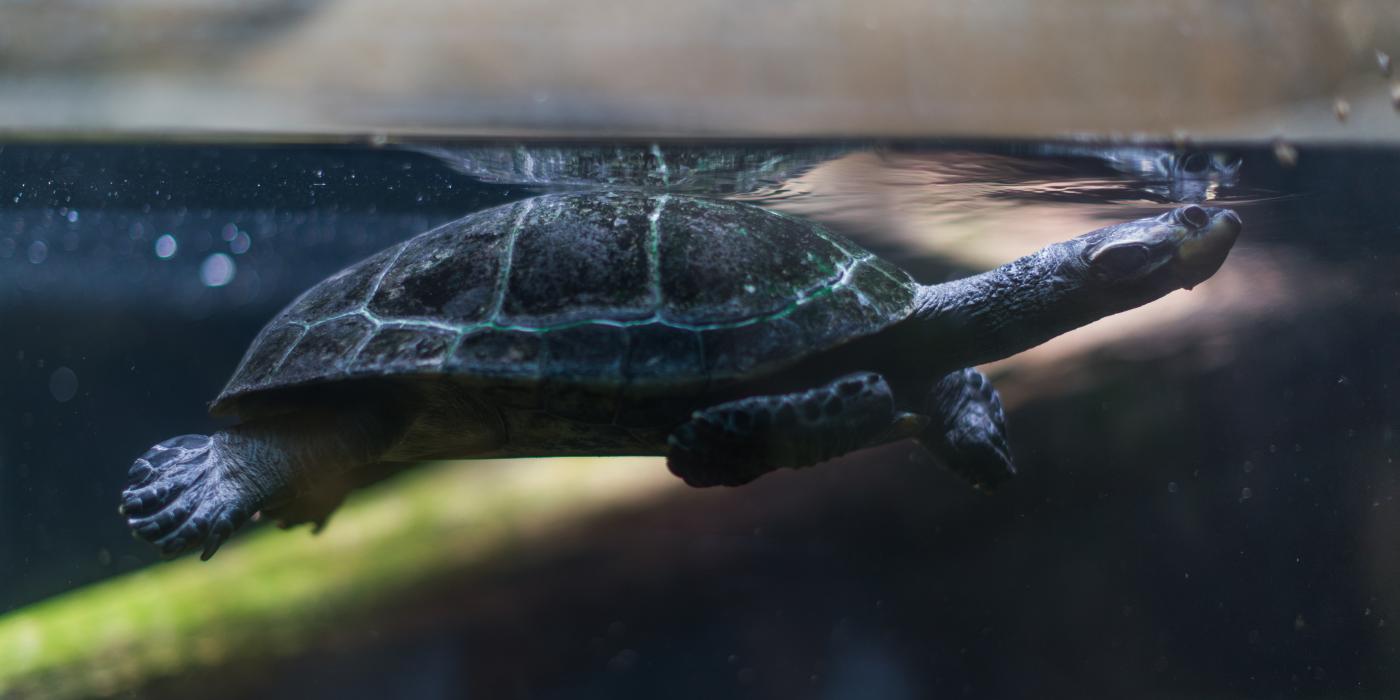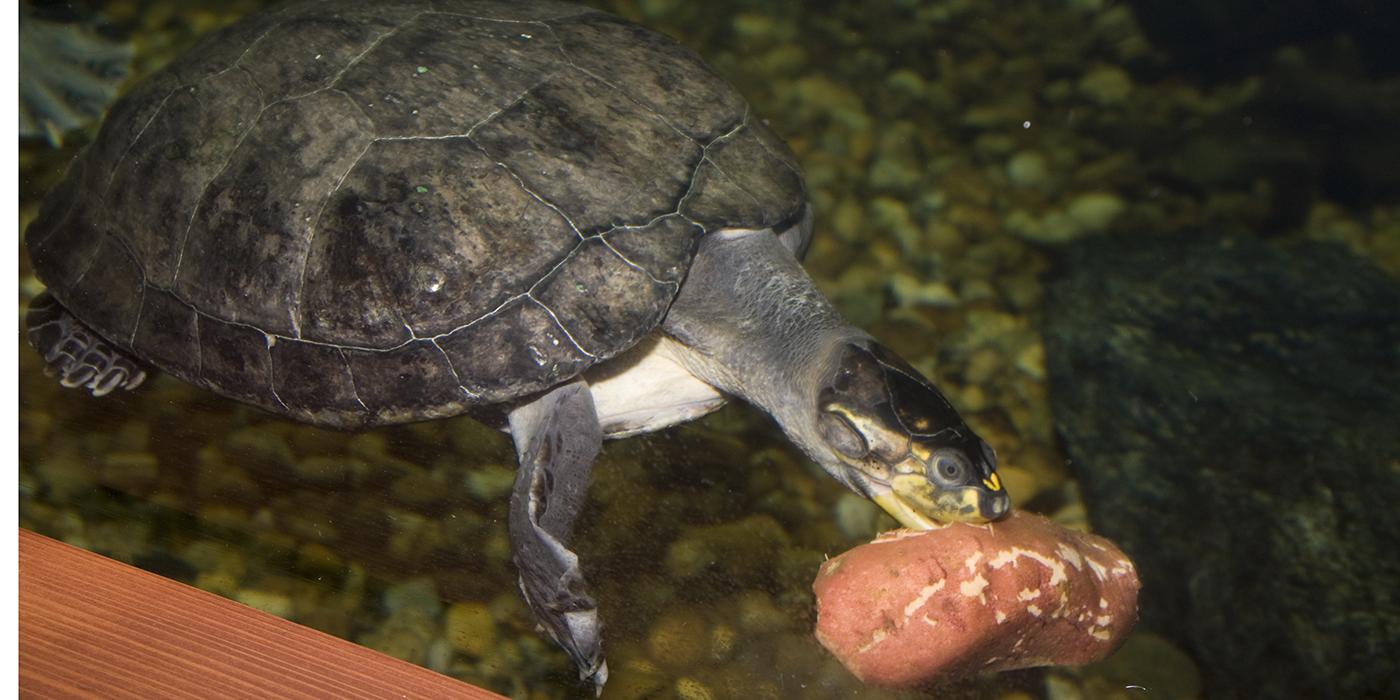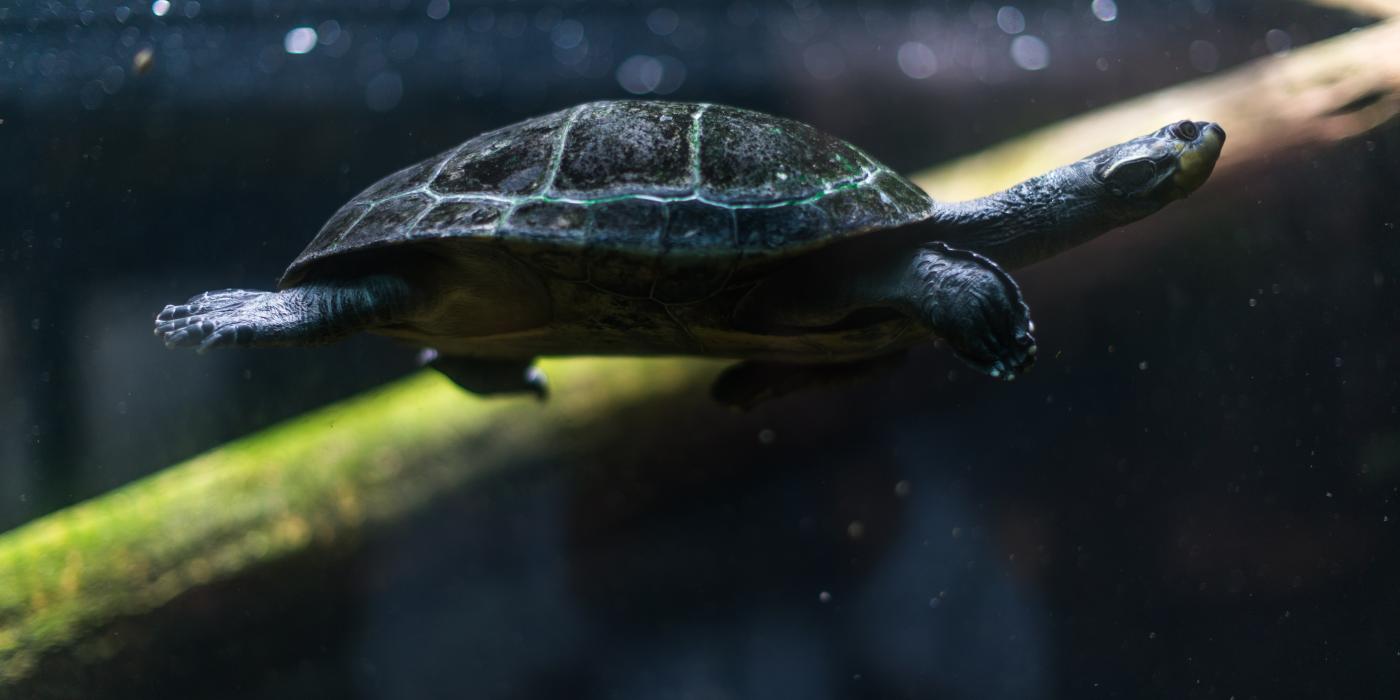Yellow-spotted Amazon River turtles are native to the Amazon River basin, where they bask along riverbanks and in the calm waters of big rivers and streams. Only juveniles and males have yellow markings on their heads. Females lose their spots as they grow.
Physical Description
The yellow-spotted turtle has a domed and dark colored shell. They have yellowish-orange head markings. There is usually a single barbel on the chin. These side-necked turtles cannot retract their head into their shell. Hatchlings have very obvious yellow spots on their heads, which shrink as they grow. Males keep some of the yellow spotting; females lose their spots altogether.
Size
The average adult length is 15 to 27 inches (38 to 69 centimeters), with females outgrowing males. Adult males weigh 1 to 2 pounds (0.5 to 1 kilograms) and females weigh 2.5 to 6.5 pounds (1 to 3 kilograms).
Native Habitat
Yellow-spotted Amazon River turtles are native to the Amazon River basin and can be found in the Amazon and Orinoco river systems in Venezuela, eastern Colombia, eastern Ecuador, northeastern Peru, the Guianas, Brazil and northern Bolivia.
These turtles spend time basking along the riverbanks and in the calm waters of big rivers and streams. They avoid fast-moving waters.
Lifespan
The oldest known yellow-spotted Amazon River turtle living in human care reached 23 years of age. They can live up to 70 years.
Food/Eating Habits
They are omnivorous, feeding on both vegetation and small animals. They have also been known to occasionally use an inertial feeding mechanism to extract fine particulate matter from the water surface.
The turtles are fed fruits and vegetables at the Smithsonian's National Zoo.
Sleep Habits
The turtles are diurnal, meaning they are most active in mid-morning and afternoon.
Reproduction and Development
Mating season varies depending on location, but nesting has been recorded for most months of the year. The clutch size averages between 15 and 25 eggs but as many as 40 are possible.
A male yellow-spotted side-necked turtle courts a larger female by nipping at her feet and tail. A few weeks later, in the evening, the female lays about two dozen (20 to 30) hard-shelled, slightly elongated eggs in a shallow nest she has dug on the riverbank.
The nest is about 26 centimeters deep and contains seven to 52 eggs, depending on female body size. The babies, which are slightly larger than a quarter, hatch out in a little over two months.
Conservation Efforts
The indigenous Yekuana Indians, who eat these turtles and their eggs, are now trying to hunt the turtles sustainably. The 12 main nesting sites of these turtles are now protected from poachers by armed guards.
Help this Species
- Reduce, reuse and recycle — in that order! Cut back on single-use goods, and find creative ways to reuse products at the end of their life cycle. Choose recycling over trash when possible.
- Share the story of this animal with others. Simply raising awareness about this species can contribute to its overall protection.
- Avoid single-use plastics, such as plastic bottles, bags and utensils. Choosing reusable options instead can help reduce plastic pollution.





